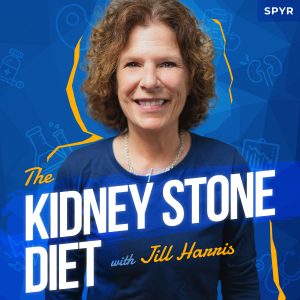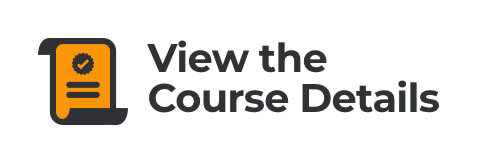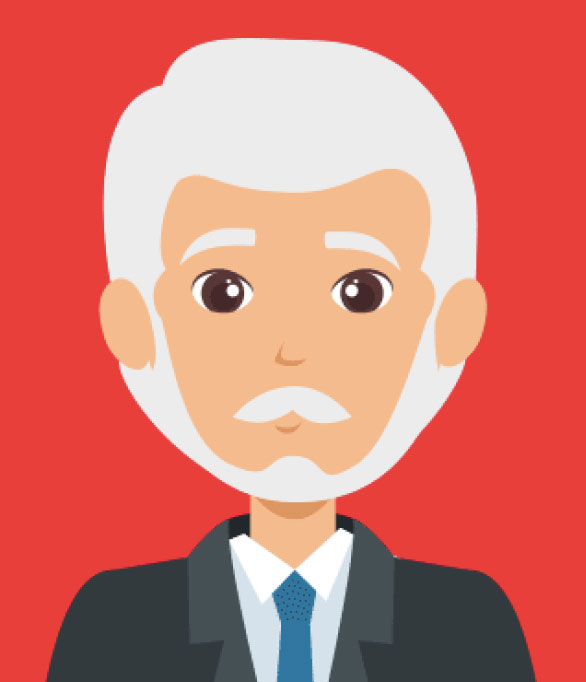In this episode of the Kidney Stone Diet Podcast, hosts Jeff Sarris and Jill Harris discuss the relationship between peanut butter and kidney stones. Jill explains the oxalate content in peanut butter and how it can affect kidney stone formation. They emphasize the importance of portion control and suggest alternatives for those concerned about oxalates. The conversation also touches on caloric considerations and the need to push back against overly restrictive dietary recommendations from healthcare providers.
Takeaways
- Peanut butter can contribute to kidney stones if consumed excessively.
- Two tablespoons of peanut butter contain about 30 milligrams of oxalate.
- Portion control is key; moderation allows for peanut butter in the diet.
- Pairing peanut butter with calcium-rich foods can mitigate oxalate absorption.
- Sunflower seed butter is a lower oxalate alternative to peanut butter.
- Granola butter, while low in oxalate, can be high in calories.
- Many people overeat low oxalate foods, leading to weight gain.
- Using powdered peanut butter can reduce calorie intake.
- Consult the Harvard Oxalate list for accurate oxalate content.
- Push back on restrictive dietary recommendations from doctors if not medically necessary.
00:00 Introduction to Peanut Butter and Kidney Stones
06:00 Caloric Considerations and Healthy Substitutes
Will Peanut Butter Give Me Kidney Stones?
Jeff Sarris (00:00):
Will peanut butter give me kidney stones? Let’s talk about that.
Jill Harris (00:04):
I’m totally psyched to do this video because it’s peanut butter. Who doesn’t like peanut butter?
Jeff Sarris (00:07):
Yeah. And for anyone who’s new, Jill has spent 26 years helping thousands of patients prevent kidney stones so you don’t have to deal with any of the pain and suffering in the future. So why don’t we dive into peanut butter?
Yes, But Only If You Eat Too Much
Jill Harris (00:20):
Yeah. Yeah. Okay, peanut butter. So will peanut butter cause kidney stones? Well, just like spinach and almonds, if you’re eating it every day, it sure can. And so many bodybuilders, many keto people, many low carb people in general will tell me this, and now they’re stone formers. “Jill, well, I just would take the jar, put the spoon in and just watch the show and just gobble it down.”
Because I’m on keto!
Well, you know, I’m not a fan of it anyway, just doing that. But you know, I’m a pain in the ass as we all know, but peanut butter, two tablespoons has almost 30 milligrams of oxalate. And most people are not only eating two tablespoons because peanut butter is delicious. Also, it has a lot of sugar, can have some salt in it. So we’ve got to watch all of it. Now people on keto are definitely eating a lower sugar peanut butter for sure.
You Can Still Have Peanut Butter
But here’s the deal. It’s portion not perfection. Can you have peanut butter and still be kidney stone free? 100%, 100% you can. I have plenty of my patients. I bring peanut butter back in fact, because it’s delicious and a lot of people enjoy it. So I tell them, if this is something that you can just, you know, basically have one tablespoon on some bread, two tablespoons.
And just, you get 100 milligrams of oxalate a day, that’s just going towards your goal, fine. I would also, which it pairs real nicely with, have some low-fat milk or whatever you’re doing with your milk or plant milk, not cashew or almond, but have it with a calcium product. A lot of people like putting maybe a spoonful of peanut butter in their Greek yogurt. I make a parfait that I’ll make a…
Greek yogurt and low sodium cottage cheese. I put it in my little Cuisinart. I put it in the freezer for about 20 minutes. Then I get some peanut butter and I put a layer of peanut butter, about a tablespoon. And then I will put a little chocolate shell on top. Delicious, delicious. But there’s a lot of calcium in what the cottage cheese and the Greek yogurt plus nice protein, right? So I can get away with it. And I do have stone formers in my family.
I have never had them, I follow the diet just as you guys do, so I pay attention to oxalate. I haven’t had spinach for decades. And I don’t eat almonds as well. So what I’m saying is, you certainly can still eat peanut butter, but here’s the other thing. Some people are like, “Jill, I’ve had such horrible experiences with kidney stones. I’ve been septic, I lost the kidney because of kidney stones. I’m not going near peanut butter.”
And that’s perfectly fine. You don’t have to have peanut butter. But you also don’t have to never have it again. So I just, you can have peanut butter. Look at the Harvard Oxalate list, which is on my website at kidneystonediet.com. Look up how much. Jeff made a searchable list there. And you can just type it in and it will tell you how much oxalate. Jeff, type it in. How much exactly is in it? Oxalate and peanut butter, what does Harvard say? Two tablespoons? Because I think it went up a little when they redid it. And then,
A lot of people are afraid to have peanut butter so they have substituted sunflower seed butter because we know sunflower seeds are a lot lower than peanuts are in oxalate. Go ahead Jeff.
The Numbers: How Much Oxalate Is in Peanut Butter?
Jeff Sarris (04:00):
Yeah, so peanut butter, reduced fat peanut butter is 16 milligrams per tablespoon.
Jill Harris (04:05):
Yeah, 16 plus 16 is 32. Yeah, so it’s 32. So, you know, it adds up. So you still have, you know, whatever, 68 milligrams of oxalate for the day. It’s very doable. You guys can have it paired with calcium. But if you’re too afraid to have peanut butter, not a judgment of fact, as many will say, “Jill, there’s no way in hell,” then please have sun butter. A lot of you.
Jeff Sarris (04:10):
Mm-hmm.
Jill Harris (04:32):
And pay attention to sugar and salt in these products. Turn it around, Buster Brown, and look and find the lower sodium, lower added sugar renditions of these products. I personally use PB Fit 2, which you can find on my Favorite Things at kidneystonediet.com. I have it, and Jeff also has a link typically to the Favorite Things article where I discuss the things that I like from the kitchen for Kidney Stone Diet.
Jeff Sarris (05:00):
Yeah, right in the description of this video or podcast.
Powdered Peanut Butter: A Lower-Calorie Option
Jill Harris (05:02):
Yes. Yes, thank you. And so I have, I use PB fit 2. I don’t use it that much, but the reason I use it is two tablespoons of peanut butter is 200 calories. I don’t want 200 calories from that. I don’t like peanut butter that much. So I use the PB fit 2 and two tablespoons of that is only 60 calories because they, it’s dehydrated. It’s a powder. And then you make it a peanut butter by just adding water, but they stripped away the fat.
And so that’s why it’s so many less calories. Now, because they did that, it could be a little higher in oxalate. Be careful of that. I don’t want people saying, “Look at this. I’m going to have a whole jar of the dehydrated peanut butter.” Don’t do that. That has not been studied. I would assume it’s a little higher in oxalate. So just stick to the portion size. And I maybe have powdered peanut butter a couple times a month. I’m not eating that every day. Anyway,
But I did use it for that parfait I was talking about, which is delicious. I posted that in the Facebook group the other day. All right, and so peanut butter, have it if you want it. What else was I saying? Jeff’s like, “I don’t know girl, I fell asleep about five minutes ago.”
Jeff Sarris (06:15):
No, not at all. But yeah, I mean, we’re talking about oxalate and yeah.
Watch Out for Other Nut Butters
Jill Harris (06:18):
I know. Granola. So a lot of you are choosing, “Ooh Jill, I see this granola butter. It’s delicious.” So you’re using that as a substitute. Guys, that’s so high in calories and it is delicious. So the only reason I bring up the calories, that’s not part of the kidney stone diet, but I’m working with people with weight loss all the time and they’re eating things like, “Well it’s not peanut butter Jill, so it’s low oxalate,” but…
They’ll tell me they’ve gained so much weight because they’re choosing lower oxalate renditions of the things they gave up, and then they’re overeating it. So things like that granola butter, which if you Google, you’ll see what I’m talking about. It is delicious and it’s very caloric and people are typically not having just two tablespoons of things. They’re overeating. So I’m just saying this as a side note for all my kidney stone formers that are struggling with weight. Turn it around, Buster Brown, and look at your calories.
Many people on a low oxalate diet will start incorporating low oxalate foods, example, rice. And now they’re eating two cups of rice with every meal. Well, yeah, you’re going to gain weight from that. Of course, it’s caloric, right? So there’s a lot of things people do that you wouldn’t think about. So I’m always kind of putting them in these videos to make sure that people get some information out there. I’m just telling you what I hear every single day on the phone.
My Bottom Line on Peanut Butter
So peanut butter guys, you can certainly bring that back into your diet if you can eat it responsibly, 100%. So please bring it back. It’s about 30 milligrams of oxalate for two tablespoons. Have it with milk. You will lower the oxalate in the product when you bind it with calcium, exactly how much. Who the hell knows, but it will be lower at least. And you have 100 milligrams of oxalate to play with unless your doctor has told you otherwise.
And that would only be if you’re a gastric bypass patient specifically or you have bowel issues specifically. Now, I’ll just say one more thing. “Well, Jill, I don’t have those things, but my doctor told me 50 milligrams of oxalate.” The doctor is being too restrictive. If there’s no medical reason why you’re being told that, I’m gonna say this. As a nurse, I don’t override a doctor’s order, but I would push back on your doctor.
A lot of them have just picked a number out of the air. And now patients really are restricted because the doctor just generically set a number. I’m being conservative when I tell you 100 milligrams. Dr. Coe always says they can have a little bit more. I’m like, “Let’s just leave it like this, Fred, because this has been working for three decades. So let’s not mess with it.” So I’m just saying, OK, please, if your doctor has said,
“50 milligrams of oxalate a day” and you don’t have any medical conditions that would make that necessary. Push back, “Well doc I heard 100 is pretty much what everyone’s doing.” “Oh okay,” you’ll see, they’ll say, “Oh okay, 100.” They just pick a number sometimes, sometimes 20, it’s ridiculous. Then you’re not eating any fruits and vegetables, folks. That’s not good. Then you’re sucking down rice because it has one milligram of oxalate and what do you do? You have diabetes? That’s not good.
That’s gonna mess up your A1C. Oh my god, the things I see. So, so, let’s just leave it at that before I go way down a windy road, Jeff.
Jeff Sarris (09:45):
No, that’s perfect. But for anyone who wants to dive in to the kidney stone diet, there’s a kidney stone prevention course. There’s meal plans. There’s tons and tons of free resources on the website at kidneystonediet.com where you can benefit from Jill’s 26 years of experience with thousands and thousands of kidney stone patients. So if you want to prevent stones, head to kidneystonediet.com and we will see you next week.
Jill Harris (10:09):
Everybody have a great week. Bye!














Leave a Reply